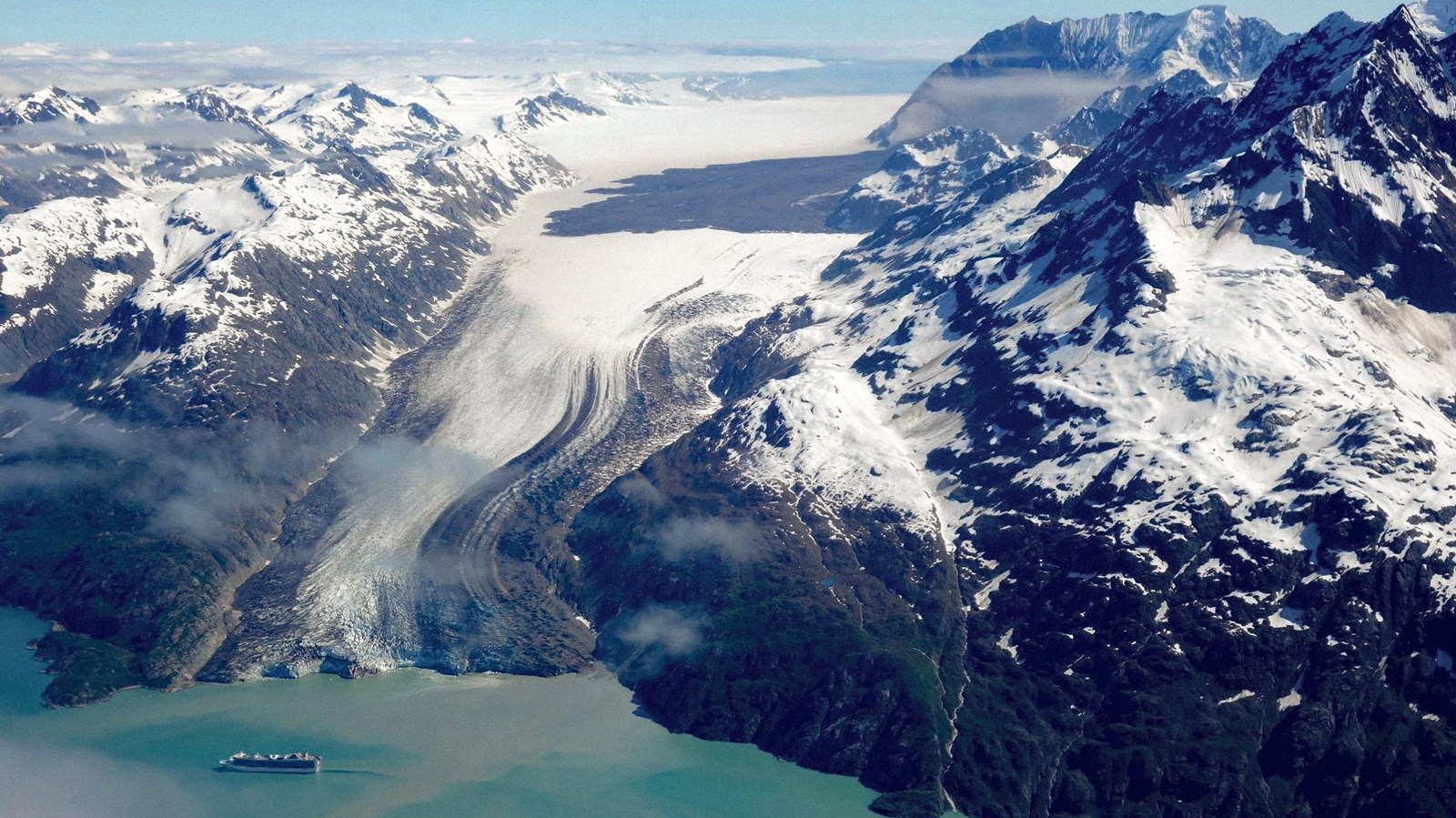Last updated: April 1, 2021
Place
Lamplugh Glacier

NPS Photo
A Glacier of Dramatic Change
Lamplugh glacier showcases the dramatic change within Glacier Bay. Descending as an arm from the Brady Icefield, Lamplugh's glacial ice is becoming increasingly susceptible to ice loss as temperatures rise due to anthropogenic climate change. Another noticeable impact of changing climate is the black blanket of a landslide covering Lamplugh glacier a few miles from its face. In 2015, a massive landslide dropped approximately 120 million metric tons of rock onto the glacier. The weight of rock altered the "internal plumbing" of meltwater within the glacier, impacting ice flow. The flow of ice still carries the burden of rock down to sea level, where the debris will be deposited.
Lamplugh is fed by the Brady Icefield, which lies east of the Fairweather Range. As temperatures warm and snow levels rise, the Brady Icefield accumulation areas appear to be shrinking year after year. Lamplugh's face is receding by calving in the central and eastern parts of its ice face at rates estimated to be around 50 to 100 feet per year. The western third of the terminus is grounded, and only at the highest high tides does saltwater reach the western-most edge of the ice face. A large subglacial stream flows from the central part of the terminus, often creating large caves in the face of the glacier. Such subglacial streams discharge large volumes of sediment-rich water into the fjord, filling the small embayment at ice's edge with brown and tan milky water. Since 2010, outwash has built up extensive mudflats along the entire face of the glacier. Wildlife, such as moose, bear and marmots, are occasionally seen traversing in front of the glacier, utilizing the new land. Pioneer plants and shrubs are covering the land recently exposed by diminishing ice.
In Glacier Bay, it is difficult to separate the natural from the human caused in such a complex place such as this. We know that, examined from a global perspective, the melting of the glaciers may pose serious challenges for our species and others in the future. And yet, in this sanctuary of Glacier Bay, we can still stand in awe of nature’s power to heal and regenerate in the face of dramatic change.
